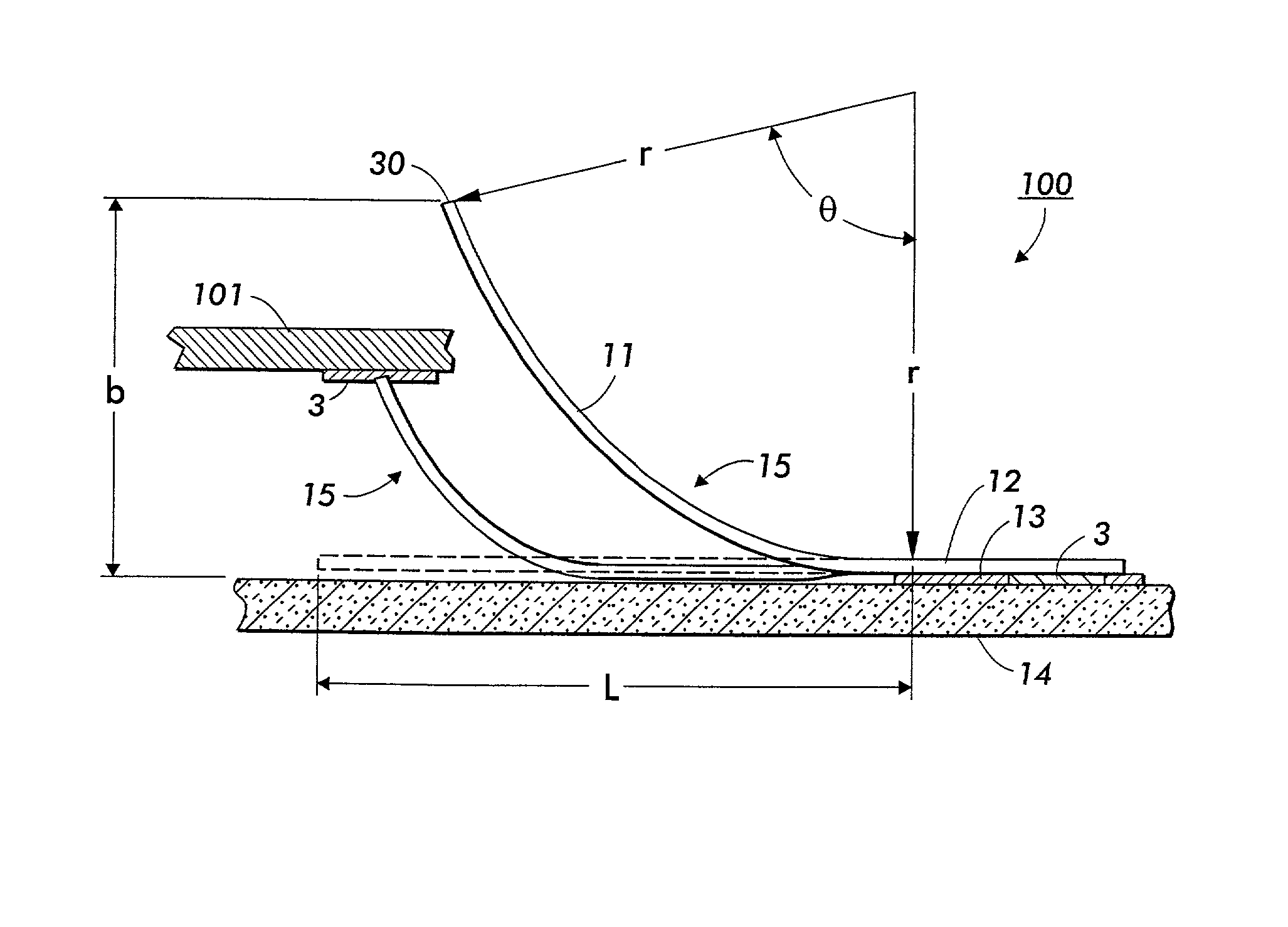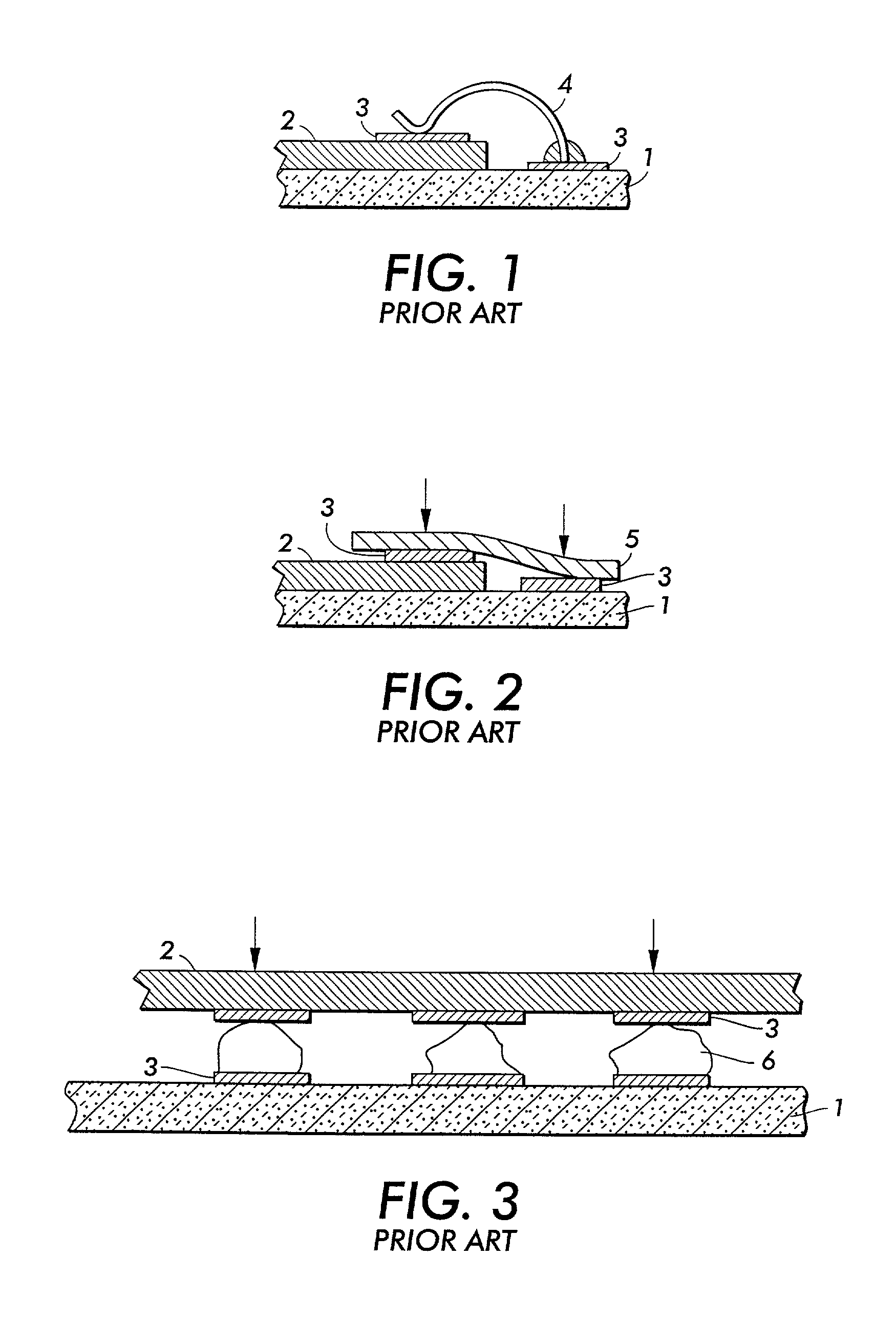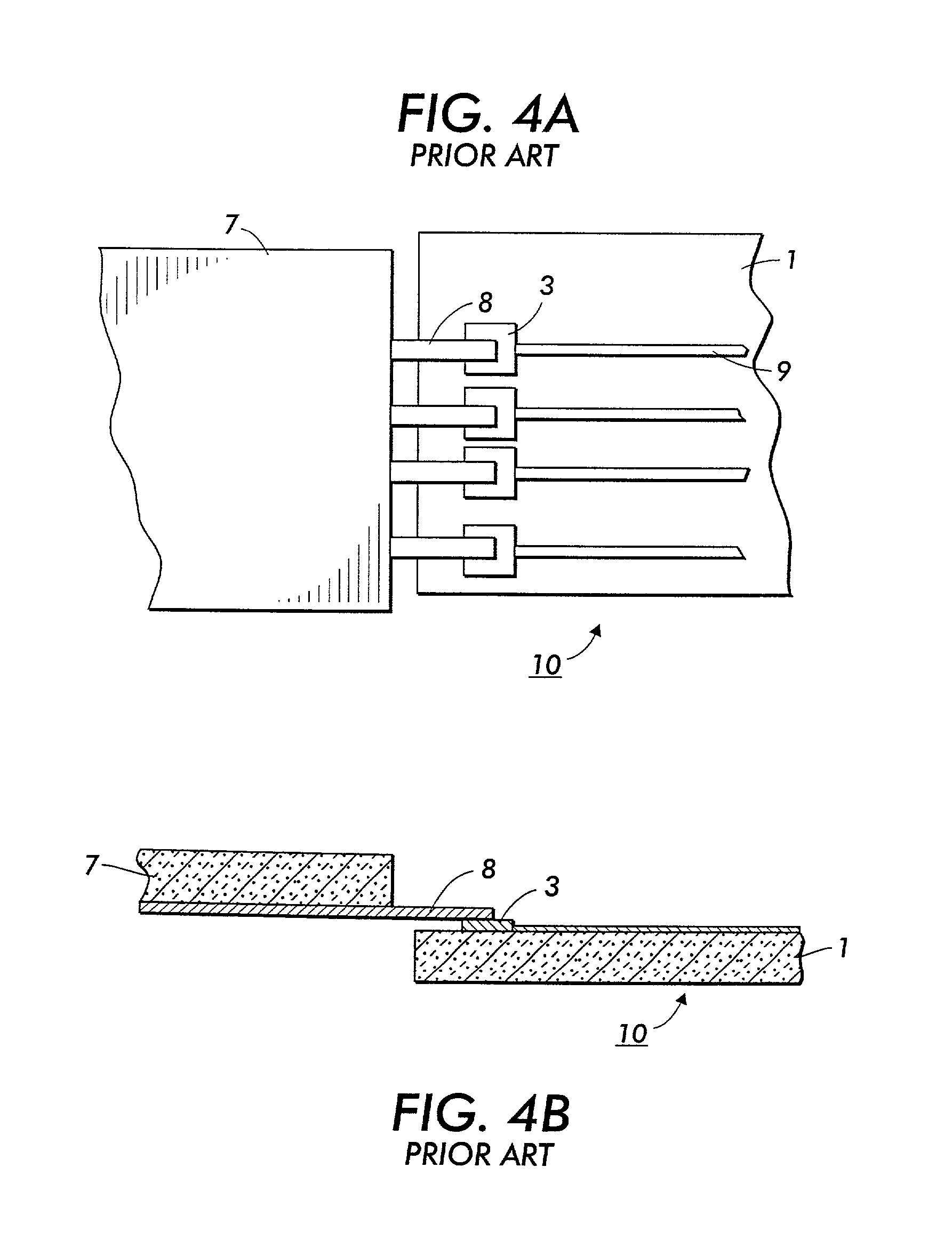Photolithographically-patterned out-of-plane coil structures and method of making
a technology of out-of-plane coils and photolithographic patterns, applied in the direction of inductances, inductances with magnetic cores, printed element electric connection formation, etc., can solve the problems of non-uniform contact force, high cost, laborious and slow wire bonding of each contact pad 3 on the chip 2 to the corresponding contact pad 3 on the substrate 1, etc., to achieve speed and ease of solder-bump flip-chip bonding
- Summary
- Abstract
- Description
- Claims
- Application Information
AI Technical Summary
Benefits of technology
Problems solved by technology
Method used
Image
Examples
Embodiment Construction
[0098] FIG. 6 shows a side view of a bonding structure 100 having a plurality of spring contacts 15. Each spring contact 15 comprises a free portion 11 and an anchor portion 12 fixed to an underlayer or release layer 13 and electrically connected to a contact pad 3. Each spring contact 15 is made of an extremely elastic material, such as a chrome-molybdenum alloy or a nickel-zirconium alloy. Preferably, the spring contacts 15 are formed of an elastic conductive material, although they can be formed of a non-conductive or semi-conductive material if they are coated or plated with a conductor material. More preferably, the spring contacts 15 are formed of a nickel-zirconium alloy having 1% zirconium. Zirconium is added to the alloy to improve the elastic properties of the alloy while not greatly affecting the conductivity of the alloy. When the elastic material is not conductive, it is coated on at least one side with a conductive material, such as a metal or metal alloy.
[0099] The co...
PUM
 Login to View More
Login to View More Abstract
Description
Claims
Application Information
 Login to View More
Login to View More - R&D
- Intellectual Property
- Life Sciences
- Materials
- Tech Scout
- Unparalleled Data Quality
- Higher Quality Content
- 60% Fewer Hallucinations
Browse by: Latest US Patents, China's latest patents, Technical Efficacy Thesaurus, Application Domain, Technology Topic, Popular Technical Reports.
© 2025 PatSnap. All rights reserved.Legal|Privacy policy|Modern Slavery Act Transparency Statement|Sitemap|About US| Contact US: help@patsnap.com



